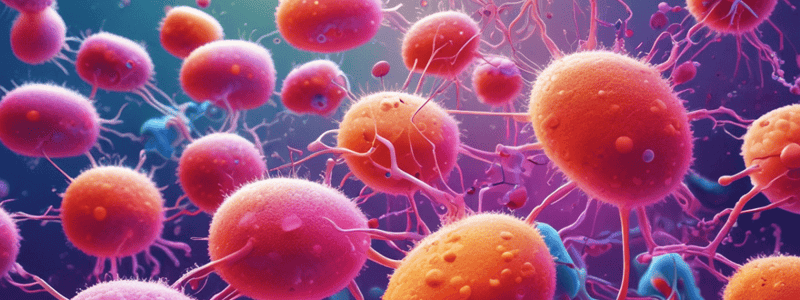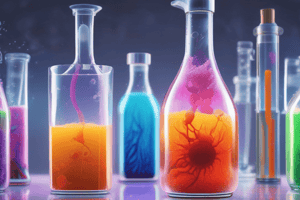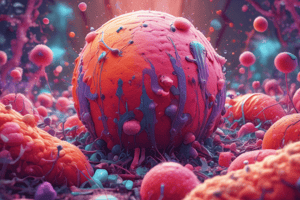Podcast
Questions and Answers
What factors should be compatible with the water quality at each stage of the cleaning process?
What factors should be compatible with the water quality at each stage of the cleaning process?
- Microbial population
- pH and hardness (correct)
- Medical devices only
- Bacterial endotoxins
What is one of the periodic tests that should be conducted on a washer-disinfector at a weekly interval?
What is one of the periodic tests that should be conducted on a washer-disinfector at a weekly interval?
- Testing the process chemical compatibility
- Checking for microbial population
- Water conductivity test (correct)
- Bacterial endotoxin detection
Which of the following is a consideration during the validation of a washer-disinfector?
Which of the following is a consideration during the validation of a washer-disinfector?
- Checking water temperature
- Assessing spray arm rotation
- Testing for bacterial endotoxins (correct)
- Routine testing for heavy metals
What does the daily test on a washer-disinfector primarily focus on?
What does the daily test on a washer-disinfector primarily focus on?
Which of the following is NOT part of the weekly periodic tests for a washer-disinfector?
Which of the following is NOT part of the weekly periodic tests for a washer-disinfector?
Why is it important to consider process requirements at each stage of the cleaning process?
Why is it important to consider process requirements at each stage of the cleaning process?
What is an essential aspect in validating a washer-disinfector before use?
What is an essential aspect in validating a washer-disinfector before use?
Flashcards are hidden until you start studying
Study Notes
Disinfection Methods
- Disinfection includes thermal and chemical methods.
- Thermal disinfection is the most efficient, cost-effective method, carried out in a thermal washer-disinfector.
- Thermal disinfection requires monitoring of time and temperature to ensure effective microbial elimination.
- Chemical disinfection effectiveness is influenced by initial microbial load, temperature, pH, and concentration.
- RMD-grade disinfectants are compatible for chemical disinfection, used in specific medical contexts like ultrasound and endoscopy units.
- Validation of chemical disinfection processes includes microbiological testing for concentration, contact time, and temperature.
Levels of Disinfection
- High-level disinfection is necessary for thermo-labile endoscopes, recommended for semicritical medical devices.
- Low-level disinfection is suitable for non-invasive medical devices used in non-critical areas.
Drying Procedures
- Drying limits rust, staining, and recontamination risks during inspection and assembly of reusable medical devices (RMD).
- Residual moisture can compromise the sterilization process.
- Utilize drying cabinets when available; alternative methods include using disposable lint-free wipes.
- Avoid flammable liquids as drying agents, except in automated equipment.
Process Chemicals Considerations
- Thorough cleaning is essential before sterilizing surgical devices, influenced by the chemicals used in the CSSD wash area.
- Hazardous properties of process chemicals can include irritation or corrosiveness (e.g., bleach and ammonia).
- Safety considerations include choosing process chemicals wisely and understanding chemical hazards through safety data sheets.
Choosing Process Chemicals
- Select process chemicals compatible with medical devices, decontamination equipment, and intended use.
- Prioritize the least hazardous options that meet safety and effectiveness requirements.
- Characteristics of suitable process chemicals: non-abrasive, low-foaming, biodegradable, non-toxic, economically viable.
Handling and Storing Process Chemicals
- Implement written procedures for handling and storage; identify incompatible chemicals.
- Store chemicals below shoulder height for safety.
- Ensure Safety Data Sheets (SDS) and labels are accessible to staff for proper hazard management.
- Provide training for personnel handling chemicals.
Water Quality Importance
- Water quality is vital at all stages of the cleaning process, affecting final outcomes of reprocessing.
- Inadequate water composition can negatively impact both the reprocessing process and the integrity of medical devices.
Studying That Suits You
Use AI to generate personalized quizzes and flashcards to suit your learning preferences.




